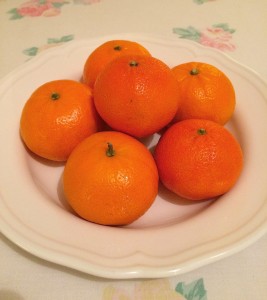As a child, the first thing I remember learning about oranges was that the food and the colour had the same name. The next things I learned were that they had prevented scurvy in the Royal Navy and King Charles II’s mistress Nell Gwyn had sold them.
I didn’t know what all these royal connections meant but concluded that oranges must be a very important fruit. In terms of health, I was right.
The botanical name for the orange is Citrus “Sinensis” or “Chinese.” As implied, the fruit probably originated in south-west Asia but, over the past 4,000 years or so, cultivation has spread across subtropical climates worldwide.
The three-year-old me thought all oranges came from Seville (except chocolate oranges, which were made in England every Easter by a man called Terry. And didn’t cure scurvy).
However, the orange’s historic link to this potentially fatal disease was spot on, as it results from a lack of vitamin C. The alarming symptoms develop from tiredness to gum disease and poor wound healing, then personality changes, and finally death from infection or bleeding. And the humble orange can be both prevention and cure.
Just 100 grammes of its edible part contains 60mg of vitamin C – two-thirds of an adult male’s daily need. As the average orange weighs 131 grammes, that’s almost enough vitamin C for the day.
The chief function of this vital vitamin is the production of the body’s cement: collagen – the structural protein that literally holds us together. It also keeps skin looking young and boosts the immune system, and in high doses can help reduce the risk of cancers, lower cholesterol and prevent anaemia.
The fruit itself also has strong anti-inflammatory effects, improves digestion, and is beneficial for arthritis, as well as its famed boost for those with colds and fevers. Those long-absent sailors were on to a good thing.
At around 62 calories, with 15 grammes of carbohydrate, three grammes of dietary fibre and a minimal fat content, it’s also a healthy source of energy. Footballers through the ages looked forward to their half-time orange.
There are also small amounts of vitamins A and E, several Bs, including folic acid, and various trace elements. Being almost 87 per cent water, it’s also a natural sachet of hydration.
And it’s not just the fleshy bit that’s nutritious. The rind contains 30 per cent pectin, which helps lower cholesterol, and anti-ageing bioflavonoids that strengthen blood vessels. Even the oil derived from the rind apparently relieves flatulence (bringing a whole new meaning to “keep ‘em peeled”).
Oranges come in various guises from your common round to mandarins, tangerines, satsumas and clementines, and the blood and navel varieties.
Being a food combiner and keeping my fruit separate, I’m partial to an easy peeler or three before bedtime. It’s based on no scientific evidence whatsoever but I get a little psychological lift thinking they are repairing my skin as I sleep. And, of course, they are also a fantastic tonic as a juice.
A classic, affordable and widely available superfruit. To tweak the famous slogan: “the future’s bright – if the present’s orange.”



Comments are closed.